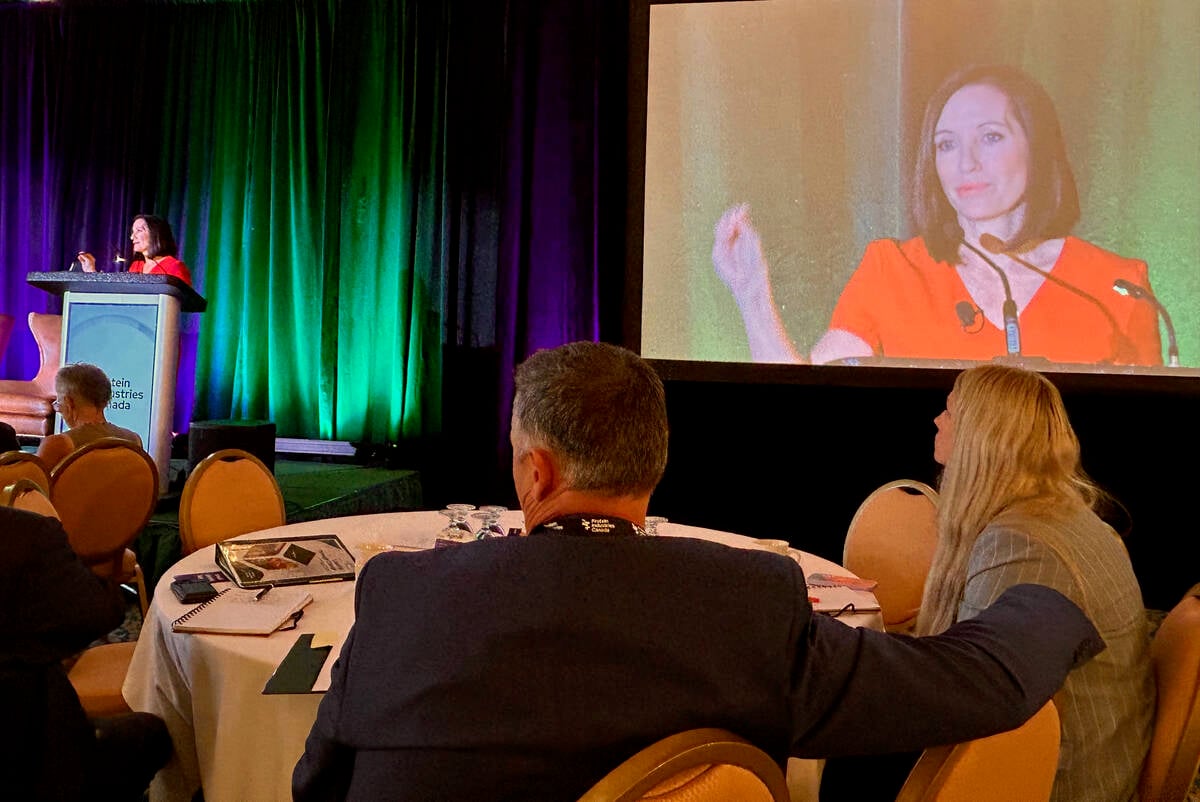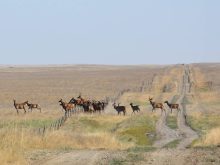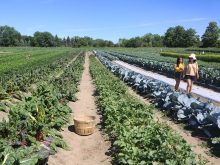Fat cattle prices have been higher than the U.S. market for the entire year, with the basis averaging $5 over
SWIFT CURRENT, Sask. — Record basis levels, strong demand and large fed slaughter characterize the current beef market, said market analyst Anne Wasko.
Speaking to the Saskatchewan Stock Growers Association annual meeting June 12, Wasko said fat cattle prices have been above the U.S. market for the entire year, with the basis averaging $5 over.
“Normally at this time, the three-year average is kind of $5 under, so we’ve already seen a $10-a-hundred shift in terms of our basis vis-à-vis the Nebraska market,” she said. “When you’ve got a strong fed cattle basis, it’s going to flow back into our feeder cattle.”
Read Also

Canada told trade crisis solutions in its hands
Canadians and Canadian exporters need to accept that the old rules of trade are over, and open access to the U.S. market may also be over, says the chief financial correspondent for CTV News.
The feeder basis is also at record strength.
“In 2017, it was the first year ever, ever, where we’d seen an annual average of eight-and-a-half weight (850 pound) feeder cattle above the U.S. market,” Wasko said.
The 10-year average is about $13 under.
She said much of the strength goes back to supply dynamics in Canada because the cow herd isn’t growing.
U.S. herd expansion is slowing and the Canadian cow herd has held extremely flat for the last eight years.
Replacement heifer numbers aren’t changing and Wasko suggested they could actually decline in future. She said year-to-date heifer marketing is up eight percent.
Cow slaughter is up 12 percent but exports are down 32 percent.
“We’ll watch this closely,” Wasko said. “It certainly feels like we’re going to move more cows with our calving issues and losses this spring.”
She also said the domestic cow kill, if the current rate continues, will be the biggest since 2010.
On the feeder side, the cattle-on-feed number dropped May 1 after a strong year. Wasko said placement numbers could be smaller depending on drought and feed issues in some areas.
Feeder exports were small last year but are already up 60 percent this year.
Interestingly, feeder imports were up in the last quarter of last year.
“For the first time since back in 2001, we saw just over 100,000 head of feeders imported last year,” she said.
She predicted the U.S. is at the end of its aggressive herd expansion, pointing to drought, feed costs and input costs combined with lower U.S. calf prices.
She added that fed slaughter in Canada is going to be big when second-quarter estimates come out.
“I think we’re going to see the largest fed slaughter in the second quarter here in Canada that we’ve seen in eight years,” she told the meeting.
It’s already up eight percent year-to-date, compared to three percent in the U.S.
In terms of demand, beef production is up in both Canada and the United States but with strong slaughter there is a lot of beef available.
Demand through 2016 and 2017 was some of the best in recent history, Wasko said.
Retail prices are high but not at the point they were in 2016, where beef lost to pork and demand remains strong.
Year-to-date exports are up five percent and the value of those sales is up 10 percent. Exports to the U.S. are up 10 percent and to Japan, eight percent. Sales to China/Hong Kong are down six percent and sales to Mexico are down 12 percent, according to the April numbers.
Wasko said the margins bear watching.
“We’re at that phase in the cattle cycle where, from a U.S. perspective, growing cow herd, larger calf crop, lower calf prices and higher inputs (are) just going to continue to put a bit of a squeeze on the margin and that trend I think stays in place, 2018, 2019 and possibly even 2020 until we get to the height of the cattle numbers cycle.”
Cattle feeders are facing more extremes in the profits and losses they typically experience, she said, and as risks and volatility increase and prices swing both directions there will be big wins and big losses.
Placements in western Canadian feedlots as of April are running down three percent so far this year and Wasko said that trend should continue.
She said the market should support a $2.10 to $2.15 calf price for the immediate future.
The U.S. futures market has been sending danger signals for a long time but feeders in both countries have stayed current rather than holding on to cattle and that has supported prices.
Wasko said the strong basis should continue through the second half of 2018, but producers should be aware it can change weekly.
“On an annual average, I am still going to stick with a fed cattle average to be six percent below our average for 2017,” she said.
Wasko also said there are factors that can send the markets off track, including drought, input costs, disease and trade. She urged producers to have a risk-management plan. Their margins will be thinner and they shouldn’t leave themselves open.


















